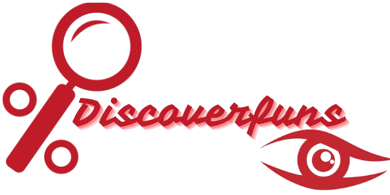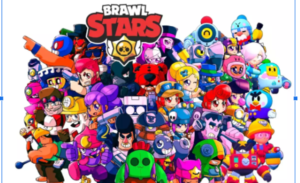A Comprehensive Overview Of View-Source:https//milfat.com/threads/13244/

When you examine the underlying code of a webpage, such as by accessing view source:https//milfat.com/threads/13244/, you’re stepping into the technical framework that powers the site. This feature allows you to inspect the inner workings of the page, revealing its structural components, design elements, and more. By delving into the source code, you can uncover insights about how the webpage is organized and how it functions behind the scenes.
Exploring the source code at view-source:https//milfat.com/threads/13244/is akin to unlocking hidden information. You’ll discover how different sections are arranged, the way hyperlinks are configured, and how the design is executed. It’s an excellent way to deepen your understanding of web development and find inspiration for your own website-building efforts.
What Is A URL?
A URL, or Uniform Resource Locator, functions as the specific address for a resource on the internet. Much like a physical address directs you to a specific location, a URL guides users to websites, individual web pages, or even files. The URL is composed of several parts, including a protocol (such as HTTP or HTTPS), a domain name (the website’s name), and an optional path that points to a specific page or file on that site. By stringing these elements together, a URL allows users and browsers to find and access a precise digital location on the web. For example, if you enter view-source:https//milfat.com/threads/13244/ into your browser, you’ll be taken to the source code of a specific webpage, revealing how it’s built and structured.
The Purpose Of Forums

Online forums are dynamic spaces where people gather to share knowledge, discuss topics, and connect over shared interests. These digital communities act as virtual meeting rooms where members can explore a variety of subjects, ranging from hobbies, personal experiences, and expertise to more specific areas such as tech support or niche interests. Within forums, individuals post questions, offer advice, and engage in meaningful conversations, fostering both learning and collaboration. These platforms also provide a sense of camaraderie, as members support one another and exchange insights, making them valuable resources for personal growth and community-building.
By visiting forums, such as the one found at view-source:https//milfat.com/threads/13244/ users can dive into in-depth discussions, form connections with like-minded individuals, and stay updated on the latest trends or developments in their areas of interest. Forums, in essence, help turn online spaces into interactive, knowledge-sharing communities.
Uniform Resource Locator, functions as the specific address for a resource on the internet. Much like a physical address directs you to a specific location, a URL guides users to websites, individual web pages, or even files. The URL is composed of several parts, including a protocol (such as HTTP or HTTPS), a domain name (the website’s name), and an optional path that points to a specific page or file on that site. By stringing these elements together, a URL allows users and browsers to find and access a precise digital location on the web. For example, if you enter view-source:https//milfat.com/threads/13244/into your browser, you’ll be taken to the source code of a specific webpage, revealing how it’s built and structured.
How To Use view-source:https//milfat.com/threads/13244/ to Explore Web Pages

To begin exploring the source code of a webpage like view-source:https//milfat.com/threads/13244/ first, navigate to the page in your web browser. Once the webpage is open, right-click anywhere on the page and select “View Page Source” from the drop-down menu. If you prefer using keyboard shortcuts, press Ctrl+U on Windows or Cmd+Option+U on a Mac. This will instantly open a new tab displaying the raw code behind the webpage.
What you’ll see is a series of coded instructions—written primarily in HTML, CSS, and JavaScript—that make up the design, layout, and functionality of the webpage. By going through this code, you can gain a deeper understanding of the specific elements used to construct the page and how they work together to display the content you’re seeing.
Learning how to use the view-source:// command, such as in the example view-source:https//milfat.com/threads/13244/ can be extremely valuable if you’re interested in web design or development. This process allows you to look behind the visual elements and grasp how the website is engineered, similar to looking under the hood of a machine to see its working parts. With consistent practice, you’ll start to recognize various patterns in coding, helping you to become more proficient in reading and interpreting web code.
Why Examine View-source:https//milfat.com/threads/13244/? Understanding the Foundation of Web Pages
Examining view-source:https//milfat.com/threads/13244/ gives you valuable insights into how a particular webpage is structured. When you view the source code, you get a glimpse of the behind-the-scenes framework that powers the website. The code includes important components such as HTML (which organizes the content), CSS (which controls the design and appearance), and JavaScript (which adds interactive functionality). This knowledge can be incredibly useful for web developers, designers, or anyone looking to understand how websites are built.
When you examine the source code, you can see how various elements—such as headings, images, and links—are structured within the page. You’ll also notice how styles and scripts are applied to enhance the visual layout and functionality of the site. Understanding these details can not only improve your web development skills but also help you troubleshoot design or functionality issues when building your own website.
In addition to aiding developers, reviewing view-source:https//milfat.com/threads/13244/ provides practical insights into how web technologies come together to create an interactive user experience. By exploring and learning from other websites’ source codes, you can sharpen your skills in web design and better understand how different technologies are used to deliver content to end users.
The Benefits Of Analyzing Source Codes

Uncover Hidden Insights
One of the major advantages of analyzing source code is the ability to uncover details that are not immediately visible on the surface of a webpage. The source code holds essential elements like tracking scripts, embedded multimedia files, metadata, and SEO tags—all of which contribute to how a website functions behind the scenes. For those interested in web design and content management, digging into these hidden aspects can provide a deeper understanding of how websites are structured and how they achieve certain goals.
Enhance Your Own Web Projects
If you’re responsible for managing a website, blog, or any digital platform, understanding how to read and analyze source codes is crucial for improving your web projects. By examining the structure of well-designed, high-performing websites, you can learn best practices in web development, design, and optimization. This knowledge can directly translate into improved site performance, better user experience, and enhanced search engine optimization (SEO). Knowing how to apply these strategies can ultimately help elevate your online presence and make your website more effective.
Build Stronger Digital Communities
Many websites today include interactive features such as discussion threads, comment sections, and like buttons to engage users. By analyzing the source code behind these elements, you can gain insights into how online interactions are facilitated. Understanding the mechanisms behind these features can help you better contribute to or even create online communities, making your digital presence more meaningful and impactful. As you grasp how these functions work, you’ll have a greater appreciation for the digital infrastructure that allows communities to thrive.
Breaking Down the Components Of A Webpage

HTML – The Backbone of Web Structure
HTML, or HyperText Markup Language, forms the core structure of every webpage.It defines the basic structure by using a series of tags to organize content, images, and media. When you view the source code, you’ll encounter a stream of HTML tags that dictate how the page is presented to users. Understanding these tags is fundamental to learning how a webpage is built, and mastering them is the first step toward creating or modifying web content.
CSS – The Aesthetic Layer
Cascading Style Sheets (CSS) control the visual aspects of a website. From font styles and colors to the layout and overall design, CSS dictates how a webpage looks. When you analyze the CSS portion of a source code, you can see how different styles are applied to various elements, creating a cohesive and visually appealing user experience. Learning how CSS works allows you to craft more aesthetically pleasing and user-friendly designs for your own web projects.
JavaScript – The Interactive Element
JavaScript adds functionality and interactive features to a webpage. It is responsible for tasks such as form validation, dynamic content, interactive maps, and real-time updates. By reviewing the JavaScript embedded within a website’s source code, you can see how these elements are implemented to enhance user interaction. Understanding JavaScript is essential for building websites that are more engaging and responsive, making them easier and more enjoyable for visitors to navigate.
Analyzing The Source Code Of A Webpage
When exploring the source code of a webpage such as view-source:https//milfat.com/threads/13244/, you’ll uncover key elements that define the structure and functionality of the site. This behind-the-scenes look reveals how various components come together to create the final user experience.
HTML Structure: The Building Blocks of the Web
HTML, or HyperText Markup Language, serves as the fundamental framework for all web pages It typically includes the declaration for the document type, followed by the head section, which contains metadata, page titles, and links to external resources like CSS stylesheets. The body section contains the actual content—text, images, and media—that users interact with. For example, on a forum thread like the one on milfat.com, the body would house posts, discussions, and user engagement elements like comments and replies.
CSS Styles: Crafting the Visual Layout
CSS (Cascading Style Sheets) governs the appearance and visual layout of a webpage. It determines how HTML elements are styled, such as their color, size, font, and positioning. When you inspect the source code, you will often find links to external CSS files that control these design choices, ensuring consistency across multiple pages.
JavaScript: Bringing the Page to Life
JavaScript is a scripting language that adds interactive features to a webpage. It can handle tasks like processing form submissions, enabling comments, managing likes or shares, and controlling how users navigate between pages. The source code for a site like milfat.com may use JavaScript to enhance the user experience, making the page more dynamic and engaging.
Understanding Key Concepts In Web Development

The Difference Between HTTP and HTTPS
In the URL view-source:https//milfat.com/threads/13244/, the use of “https” indicates that the site employs HTTPS (HyperText Transfer Protocol Secure), ensuring that all communication between your browser and the server is encrypted for security. This is essential for protecting sensitive information. In contrast, HTTP lacks this encryption, making data vulnerable to interception.
URL Parameters: What They Do
While the specific URL view-source:https//milfat.com/threads/13244/ does not include any parameters, many URLs do. These parameters are pieces of information appended to the end of a URL, introduced by a question mark (?), that can transmit data like search queries, user preferences, or tracking information.
HTML5: The Modern Standard for Web Development
Modern websites, including those like milfat.com, are often built using HTML5, the latest iteration of HTML. HTML5 introduces advanced features that make it easier to create multimedia-rich webpages, including native support for video, audio, and complex animations without the need for third-party plugins.
Practical Uses Of Viewing Source Code: Who Benefits?
Web Developers
For web developers, regularly analyzing source code can be incredibly valuable. It allows them to troubleshoot and debug their own websites, understand how specific features on other websites work, and reverse-engineer those features to learn best practices in design and functionality.
Digital Marketers
Marketers also benefit from inspecting source codes, particularly for optimizing SEO strategies. By viewing the source code, marketers can check the implementation of key SEO elements like meta descriptions, title tags, and header tags. This information provides insights into how high-ranking pages are optimized, helping marketers refine their own strategies to improve search engine visibility.
How To Access The Source Code In Different Browsers
Google Chrome
To view a webpage’s source code in Google Chrome, simply right-click anywhere on the page and select “View Page Source” from the context menu. Alternatively, you can type “view-source:” before the URL in the address bar and hit Enter.
Mozilla Firefox
In Mozilla Firefox, the process is similar. Right-click on the webpage and choose “View Page Source,” or manually enter “view-source:” before the URL in the address bar.
Microsoft Edge
Microsoft Edge users can right-click on a webpage to choose “View Page Source,” or they can type “view-source:” in the browser’s address bar to see the underlying code.
Safari (Mac)
In Safari on a Mac, right-clicking on the page and selecting “Show Page Source” will display the code. Alternatively, you can go to the “Develop” menu and choose “Show Page Source.”
The Role Of Meta Tags in SEO for view-source:https//milfat.com/threads/13244/

Meta tags play a critical role in search engine optimization (SEO) for any webpage, including view-source:https//milfat.com/threads/13244/ These tags provide essential information to search engines, helping them understand what the page is about. Meta tags usually include elements like the page title, meta description, and keywords, which directly influence how a page is indexed and ranked.
When examining the source code for this thread, analyzing the meta tags gives you insight into the site’s SEO strategy. Properly optimized meta tags can significantly boost a page’s visibility on search engine results pages (SERPs), driving more organic traffic to the site.
For website owners, understanding how to structure and implement meta tags, like those found on milfat.com, is essential for improving search rankings and enhancing overall site discoverability.
Key Considerations For Optimizing Meta Tags in SEO
By inspecting the meta tags in view-source:https//milfat.com/threads/13244/ you can learn valuable techniques for optimizing your own pages. Ensuring that titles and descriptions are concise, relevant, and include targeted keywords is critical for improving search rankings. A well-written meta description can also encourage more users to click on your page in the search results.
To improve SEO efforts, follow these best practices:
- Keep the meta title between 50-60 characters and ensure it contains your primary keyword.
- Write meta descriptions that are clear and around 150-160 characters long, using action-oriented language to entice users.
- Make use of relevant keywords without keyword stuffing to maintain a natural and engaging tone.
Adopting these practices will not only help search engines understand your content but also improve the chances of users engaging with your website.
Common Mistakes To Avoid in view-source:https//milfat.com/threads/13244/
While analyzing the source code for view-source:https//milfat.com/threads/13244/, it’s important to be aware of common pitfalls. A frequent mistake is overlooking the significance of comments in the code. These comments, although not visible on the actual page, can offer useful insights into how the page is structured and its various functionalities.
Another error is neglecting dynamically loaded content. Some aspects of a page, such as interactive features or advertisements, may only appear after the page has fully loaded. Failing to account for these dynamic elements can lead to incomplete or inaccurate conclusions about the page’s structure.
Finally, ensure that you are working with the most up-to-date version of the source code. The code may be periodically updated, and analyzing an outdated version could lead to incorrect assumptions about the page’s design or SEO strategy. Always check for recent changes to maintain accuracy in your analysis.
Practical Tips For Analyzing view-source:https//milfat.com/threads/13244/
To effectively analyze the source code of view-source:https//milfat.com/threads/13244/, start by breaking the page down into its essential components—HTML, CSS, and JavaScript. This structured approach makes it easier to focus on specific aspects of the webpage and understand how each part contributes to the overall design and functionality.
Additionally, leverage browser developer tools to gain deeper insights. These tools allow you to inspect elements in real-time, debug issues, and even simulate how the webpage will appear on different devices. This hands-on approach can greatly enhance your understanding of how the code operates behind the scenes.
Lastly, compare the source code with industry best practices. By aligning your analysis with established standards in web development and SEO, you can identify areas of improvement for the site and apply similar strategies to your own web projects.
Advanced Methods For Examining view-source:https//milfat.com/threads/13244/

For users interested in gaining a more in-depth understanding of view-source:https//milfat.com/threads/13244/ there are several advanced methods to enhance your exploration. One key approach is utilizing browser developer tools to dig into network requests and analyze dynamic content that might not be readily visible in the static source code. These tools allow you to observe data being fetched in real-time, providing valuable insights into how different elements on the page load and function.
Additionally, using specialized browser extensions or plugins can offer extra layers of analysis. These tools provide enhanced visibility into how different components of the page interact with each other, as well as pinpoint areas where further performance optimization may be possible. They can also assist in identifying bottlenecks, revealing opportunities to streamline load times and improve the user experience.
Lastly, learning about popular web development frameworks and libraries utilized within the source code can further boost your skills. Frameworks such as React, Angular, or Vue.js are often used to manage and build complex websites. By familiarizing yourself with these technologies, you can develop a more comprehensive understanding of modern web development trends, empowering you to apply these practices to your own projects and better interpret the techniques used on milfat.com.
Practical Benefits Of Analyzing HTML Code For Users and Developers
Exploring HTML code provides significant advantages for both users and web developers. For casual users, understanding the structural elements of a webpage can enhance their browsing experience by helping them identify and resolve issues such as broken links or content errors. By looking at the source code of pages like view-source:https//milfat.com/threads/13244/, users can quickly spot problematic areas and better understand how websites function behind the scenes.
For web developers, studying the HTML of other sites offers a wealth of knowledge, from learning about clean coding practices to adopting effective SEO techniques. Reviewing how successful websites are built provides insight into making your own designs more user-friendly and efficient. This examination can also highlight opportunities to optimize your site’s performance by removing unnecessary code, reducing load times, and ensuring smoother navigation.
In addition, analyzing HTML helps web developers address potential security vulnerabilities. By thoroughly inspecting source code, developers can spot risks that might compromise the safety of user data or the website itself. Overall, whether for educational purposes or practical use, gaining a deep understanding of HTML is an invaluable skill that benefits anyone willing to take the time to explore it.
You may also read: https-ontpress-com
FAQs
1. Why is analyzing HTML code important?
Analyzing HTML code allows both users and developers to understand how a webpage is structured. It can help users troubleshoot issues like broken links, while developers can use it to improve site performance, security, and SEO.
2. How can regular users benefit from viewing the source code of a webpage?
By viewing the source code, users can identify problems such as missing elements, hidden content, or errors that may impact the browsing experience. It also allows users to gain a basic understanding of how websites function.
3. What can web developers learn from studying the source code of other websites?
Web developers can gain insight into best practices for coding, design, and SEO. It provides a learning opportunity to see how high-performing websites handle things like layout, interactive elements, and performance optimization.
4. How does reviewing HTML code improve website performance?
By analyzing the HTML structure, developers can identify unnecessary code or scripts that may be slowing down the site. Streamlining the code can lead to faster loading times and a better user experience.
5. Can analyzing HTML code help identify security vulnerabilities?
Yes, thoroughly inspecting the HTML and other components of a website can reveal security flaws or weaknesses that hackers might exploit. This proactive analysis helps developers secure their websites more effectively.
Conclusion
Analyzing the HTML source code of webpages, such as view-source:https//milfat.com/threads/13244/ provides valuable insights for both users and developers. It enhances the browsing experience by identifying and solving content issues, while also helping developers optimize performance, improve security, and implement better SEO practices. Whether for educational purposes or practical applications, mastering the skill of source code analysis equips you with the knowledge to create more efficient, user-friendly, and secure websites. By exploring and understanding HTML, anyone can take their web experience and development skills to the next level.
Stay in touch with us for more updates and alerts! Discoverfuns







